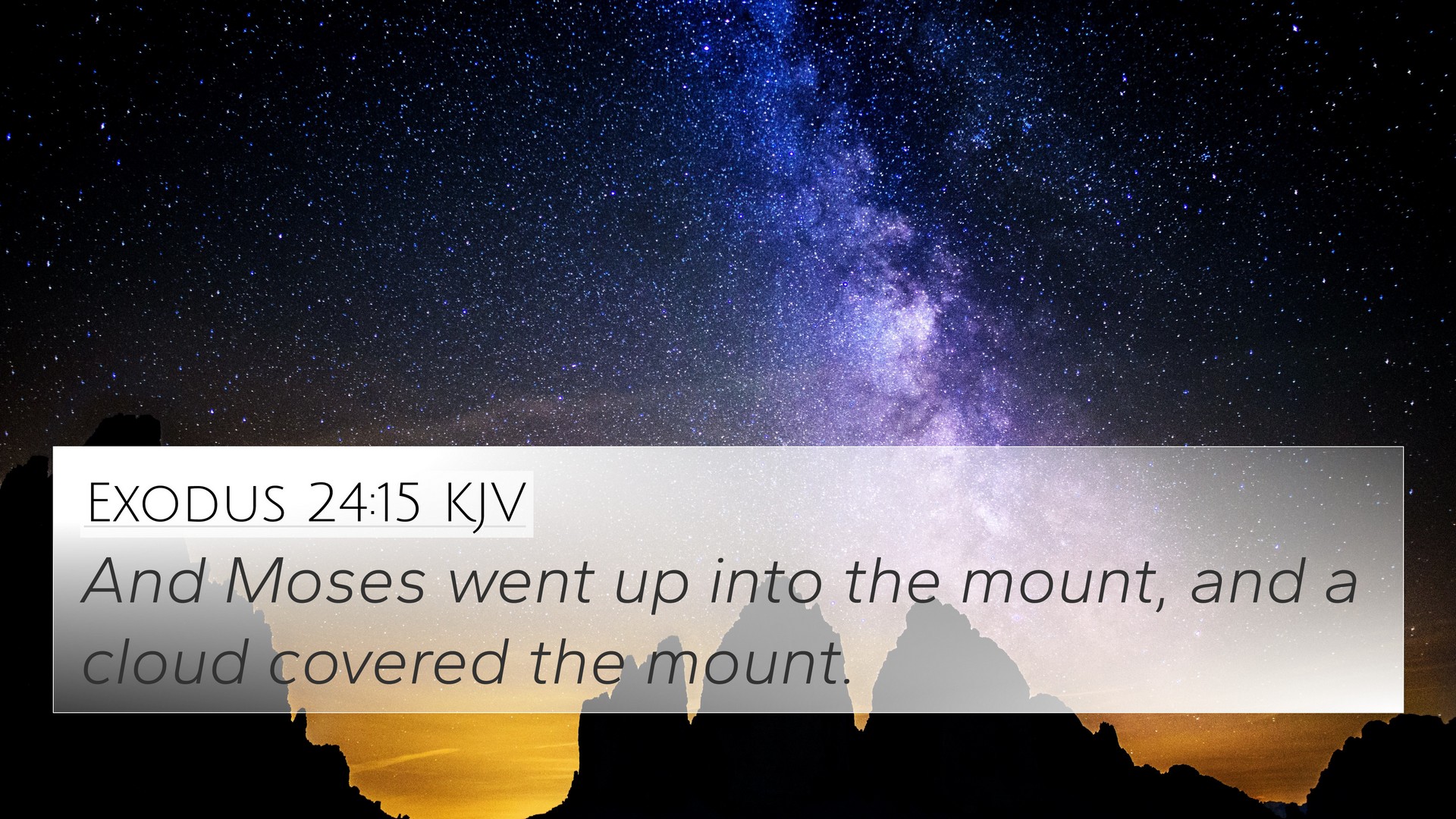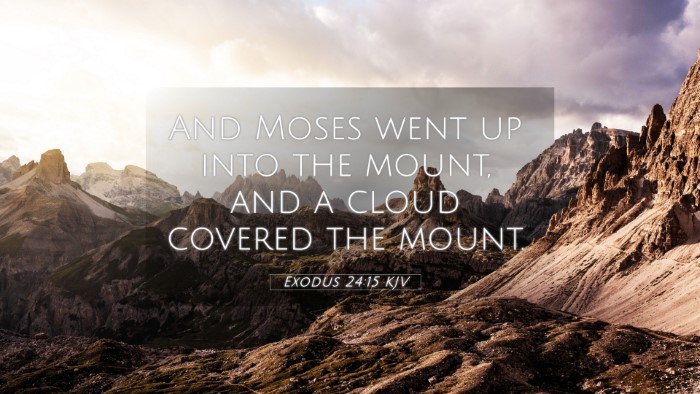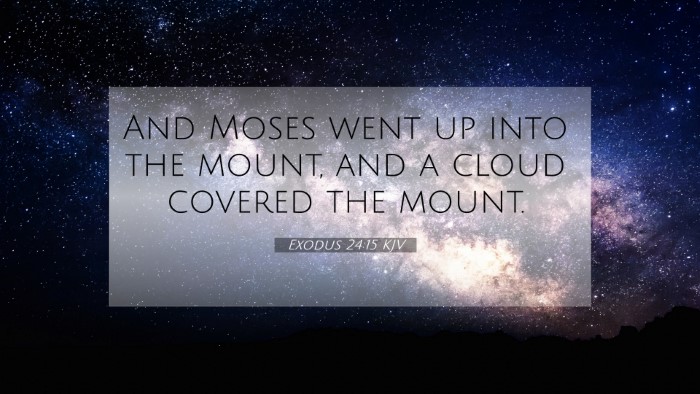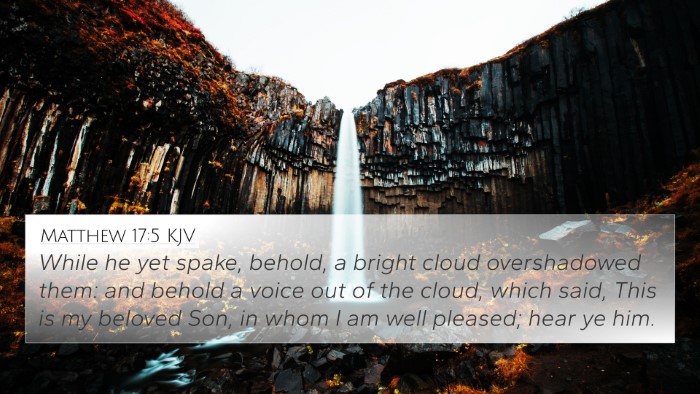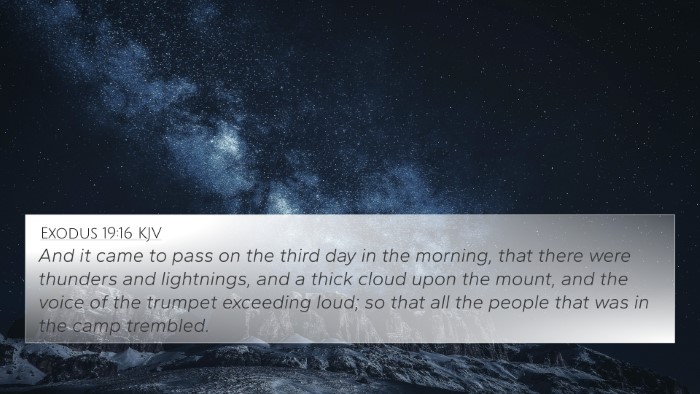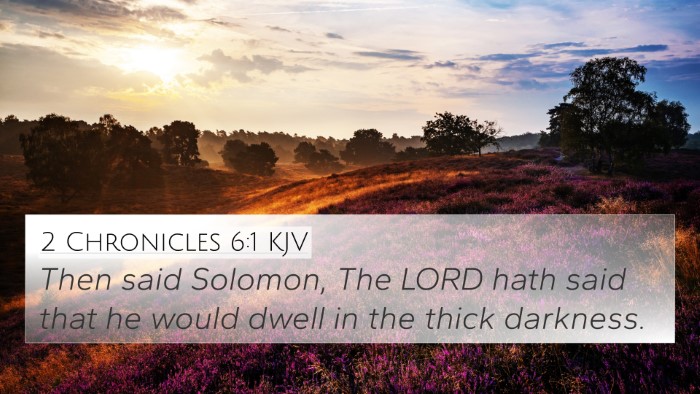Understanding Exodus 24:15
Exodus 24:15 states, "Then Moses went up on the mountain, and the cloud covered the mountain." This moment is significant not only in terms of the historical account of Moses receiving the Law but also in its deeper implications regarding God's presence and the covenant relationship between God and His people. Below is a summarized interpretation based on insights from well-known public domain commentaries.
Contextual Significance
The context of Exodus 24:15 is critical for understanding its meaning. Moses ascends Mount Sinai at God’s command, entering into a sacred space characterized by divine glory as indicated by the covering of the mountain with a cloud.
Commentary Insights
- Matthew Henry: Henry emphasizes the holiness of God's presence that is made manifest in the cloud. The mountain’s covering symbolizes the mystery and majesty of God, suggesting that God's ways are beyond human understanding. It also marks the point where Moses is set apart to receive God's commandments directly, reinforcing Israel’s covenant with God.
- Albert Barnes: Barnes details the physical and spiritual implications of the cloud. He notes that the cloud represents God's protection over Moses and the people during this significant moment. It also indicates a divine approval of the covenant that was established, showcasing God's readiness to commune with His people through Moses.
- Adam Clarke: Clarke provides insight into the typological significance of the cloud. He connects it to the notion of God's presence throughout scripture, where clouds often symbolize divine communication and revelation. Clarke emphasizes that the establishment of the covenant at this moment is foundational for Israel's identity as God's chosen nation.
Thematic Bible Verse Connections
Exodus 24:15 serves as a pivotal moment that resonates with various themes in scripture such as covenant, divine presence, and revelation. Here are some cross-references that relate to this verse:
- Exodus 19:9: "And the LORD said to Moses, 'Behold, I come to you in a thick cloud...'" - This verse introduces the concept of God’s presence in the cloud, preparing the people for the divine encounter.
- Hebrews 12:18-21: "For you have not come to what may be touched, a blazing fire, and darkness..." - This New Testament reference contrasts the accessible presence of God with the terrifying aspect of His holiness mountain at Sinai.
- Psalm 97:2: "Clouds and thick darkness are all around him..." - This verse affirms the theme of divine majesty, suggesting God's glory is often accompanied by clouds, similar to the experience on Sinai.
- Matthew 17:5: "He was still speaking when, behold, a bright cloud overshadowed them..." - Here, the theme of God's voice coming from a cloud is reiterated in the New Testament during the Transfiguration of Christ, showing continuity of divine revelation.
- Acts 1:9: "And when he had said these things, as they were looking on, he was lifted up, and a cloud took him out of their sight." - This reflects the ongoing symbolism of clouds in divine encounters, connecting the Old Testament to the ascension of Christ.
- 1 Kings 8:10-11: "And when the priests came out of the holy place, a cloud filled the house of the LORD..." - The cloud here highlights the presence of God in a temple, which can be paralleled to His presence at Sinai.
- Revelation 1:7: "Behold, he is coming with the clouds..." - This future promise of Christ's return solidifies the ongoing significance of clouds as a representation of God’s sovereignty and majesty.
Conclusion: Inter-Biblical Dialogue
The complexity and richness of Exodus 24:15, through its various connections, form a vital part of understanding God's continuous engagement with humanity. The view of the cloud serves not only as a physical manifestation but invites theological reflection on God's covenantal relationship with His people throughout history.
Reflective Questions:
- How does the concept of God's presence in the cloud influence your understanding of divine encounters?
- In what ways can we see the connections between the Old Testament revelations and the New Testament fulfillments?
- How does understanding the themes encapsulated in Exodus 24:15 affect our approach to Bible study today?
Tools for Bible Cross-Referencing
To deepen your study of Exodus 24:15 and similar verses, consider utilizing these tools for cross-referencing:
- Bible concordance for thematic exploration.
- Bible cross-reference guide to connect scriptures.
- Cross-reference Bible study for comprehensive understanding.
- Identifying connections between Old and New Testament through various Bible reference resources.
- Engaging in comparative studies of Pauline epistles and their linkages to Exodus narratives.
